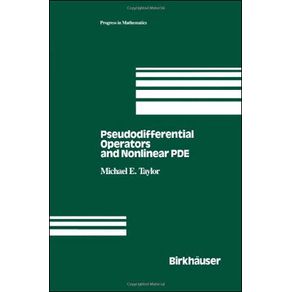For the past 25 years the theory of pseudodifferential operators has played an important role in many exciting and deep investigations into linear PDE. Over the past decade, this tool has also begun to yield interesting results in nonlinear PDE. This book is devoted to a summary and reconsideration of some uses of pseudodifferential operator techniques in nonlinear PDE. One goal has been to build a bridge between the two approaches which have been used in a number of papers written in the last decade, one being the theory of paradifferential operators, pioneered by Bony and Meyer, the other the study of pseudodifferential operators whose symbols have limited regularity. The latter approach is a natural successor to classical devices of deriving estimates for linear PDE whose coefficients have limited regularity in order to obtain results in nonlinear PDE. After developing the requisite tools, we proceed to demonstrate their effectiveness on a range of basic topics in nonlinear PDE. For example, for hyperbolic systems, known sufficient conditions for persistence of solutions are both sharpened and extended in scope. In the treatment of parabolic equations and elliptic boundary problems, it is shown that the results obtained here interface particularly easily with the DeGiorgi-Nash-Moser theory, when that theory applies.



